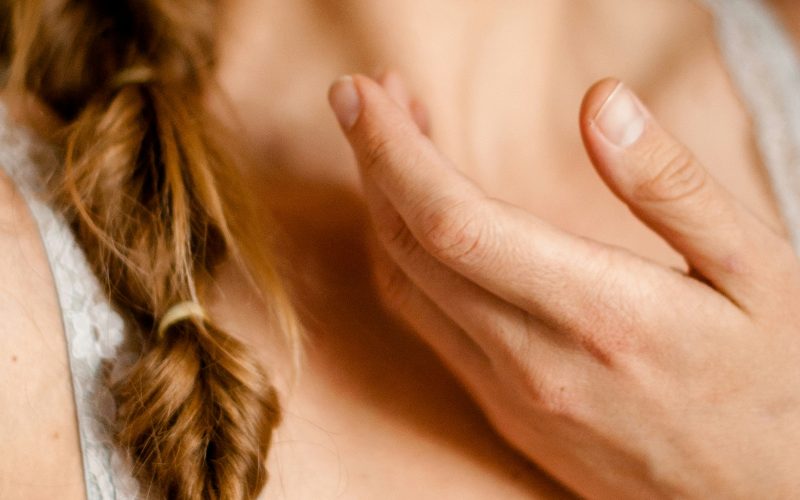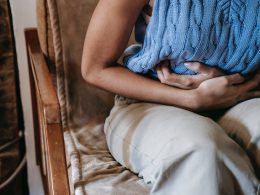Have you ever noticed a stubborn, itchy rash on your chest or under your bra and wondered what’s going on? You’re not alone. Breast eczema is more common than you might think, and it can be both uncomfortable and confusing. In this blog, we’ll break down what breast eczema is, what causes it, how to spot the symptoms, and, most importantly, how you can find relief. We’ll also touch on the option of participating in clinical trials of atopic dermatitis, which could open doors to new treatments. Let’s get started so you can take control of your skin health.
What Is Breast Eczema?
Breast eczema is a type of eczema (also known as dermatitis) that affects the skin on or around your breasts. It’s not just a rash—it’s a chronic skin condition that can cause itching, redness, flaking, and discomfort. Unlike a simple irritation, breast eczema often flares up repeatedly and can be tricky to manage if you don’t know what’s behind it.
Anyone can develop breast eczema, but it’s especially common among women, people with sensitive skin, or those with a personal or family history of eczema, asthma, or allergies. Understanding breast eczema is important because it helps you take the right steps to manage symptoms and avoid unnecessary worry. Plus, knowing what’s normal and what’s not can help you spot when it’s time to see a doctor.
Spotting the Signs: What Does Breast Eczema Look and Feel Like?
So, how do you know if that rash or itch is actually breast eczema? Here are some classic signs to look out for:
- Persistent itching or burning sensation on or around the breasts
- Red, dry, or scaly patches of skin
- Swelling or rough texture
- Small bumps or blisters that may ooze or crust over
- Cracked or thickened skin, especially in the folds under the breast or around the nipples
Symptoms can show up anywhere on the breast, but they’re most common in areas where skin touches skin (like under the breasts or in the cleavage) or where clothing rubs. For some, the discomfort is mild and manageable, while for others, it can be severe enough to disrupt daily life.
It’s important to note that breast eczema can sometimes look similar to other conditions, such as fungal infections or even rare forms of breast cancer like Paget’s disease. If you notice unusual changes, like a persistent sore, nipple discharge, or a lump, it’s best to check in with your healthcare provider. Better safe than sorry, right? Recognizing these symptoms early can help you get the right treatment and avoid complications.
What Causes Breast Eczema?
You might be wondering, “Why me?” Well, breast eczema doesn’t have a single cause. Instead, it’s usually the result of a combination of factors:
- Genetics: If eczema, asthma, or allergies run in your family, you’re more likely to develop it.
- Immune system: An overactive immune response can make your skin more sensitive to irritants and allergens.
- Skin barrier: People with eczema often have a weaker skin barrier, making it easier for moisture to escape and irritants to get in.
- Hormonal changes: Fluctuations during menstruation, pregnancy, or breastfeeding can trigger or worsen symptoms.
- Irritants: Everyday products like soaps, detergents, perfumes, and even sweat can set off a flare-up.
- Allergens: Certain foods or environmental allergens (like pollen or pet dander) may also play a role.
Breastfeeding moms might notice eczema flares due to moisture, friction, or even reactions to nursing pads. On the other hand, some people find their symptoms get worse during stressful times or when the weather changes. Understanding what’s behind your breast eczema can help you manage it more effectively and avoid future flare-ups.
Everyday Triggers: What Makes Breast Eczema Worse?
Knowing what can make breast eczema worse is half the battle. Here are some common triggers to watch out for:
- Tight or synthetic clothing that traps sweat
- Harsh soaps, detergents, or fabric softeners
- Hot showers or baths that dry out your skin
- Excessive sweating, especially in hot weather
- Stress and lack of sleep
- Certain foods (like dairy, nuts, or gluten) in sensitive individuals
Everyone’s skin is different, so what bothers one person might not affect another. It’s a good idea to keep a journal of your symptoms and daily habits. This way, you can spot patterns and avoid your personal triggers. Over time, you’ll get better at managing your flare-ups and keeping your skin comfortable.
Relief at Home: Simple Tips for Soothing Breast Eczema
Dealing with breast eczema at home doesn’t have to be complicated. Here are some tried-and-true tips that can make a real difference:
- Moisturize regularly: Use a fragrance-free, hypoallergenic moisturizer after bathing and throughout the day.
- Choose gentle cleansers: Skip the harsh soaps and opt for mild, non-soap cleansers.
- Wear soft, breathable fabrics: Cotton bras and loose clothing help reduce irritation and let your skin breathe.
- Avoid scratching: It’s tempting, but scratching can make things worse and even lead to infection.
- Cool compresses: Applying a cool, damp cloth can soothe itching and reduce inflammation.
- Pat dry, don’t rub: After a shower, gently pat your skin dry instead of rubbing.
If you’re breastfeeding, changing nursing pads often and keeping the area clean and dry can help prevent irritation. Sometimes, simple changes like switching laundry detergents or showering with lukewarm water can make a surprising difference.
However, if your symptoms don’t improve with these steps, or if you notice signs of infection (like oozing, pain, or fever), it’s time to reach out to your healthcare provider. Home remedies are great for mild cases, but persistent or severe breast eczema needs professional attention.
Medical Treatments: When to See a Doctor and What to Expect
Sometimes, home care just isn’t enough. If your breast eczema is severe, keeps coming back, or doesn’t respond to over-the-counter creams, it’s a good idea to see a doctor. Here’s what you can expect:
- Diagnosis: Your doctor will examine your skin and may ask about your medical history and symptoms.
- Prescription creams: Topical steroids or non-steroidal anti-inflammatory creams can help reduce inflammation and itching.
- Antibiotics: If there’s a secondary infection, you might need an antibiotic cream or oral medication.
- Patch testing: In some cases, your doctor may recommend allergy testing to identify specific triggers.
Professional treatment can bring much-needed relief and help you manage your condition in the long term. Plus, your doctor can rule out other issues that might look like breast eczema but require different care.
Participating in Clinical Trials of Atopic Dermatitis: Is It Right for You?
If you’ve tried all the usual treatments and still struggle with breast eczema, you might be curious about participating in clinical trials of atopic dermatitis. But what does that actually mean?
Clinical trials are research studies that test new treatments or approaches for conditions like eczema. By joining a trial, you could:
- Access cutting-edge therapies not yet available to the public
- Receive expert medical care and monitoring
- Help advance research that benefits others with eczema
- Sometimes receive compensation for your time and travel
Not everyone qualifies for every trial, but many studies are looking for people with moderate to severe eczema, including breast eczema. If you’re interested, talk to your doctor or search reputable databases like ClinicalTrials.gov. Just remember, participating in a clinical trial is a personal decision, so weigh the pros and cons before signing up.
Preventing Flare-Ups: Everyday Habits for Healthier Skin
Preventing breast eczema flare-ups often comes down to a few simple habits:
- Stick to a consistent skincare routine with gentle products
- Manage stress through relaxation techniques or mindfulness
- Wear loose, breathable clothing whenever possible
- Watch your diet if you suspect certain foods trigger your symptoms
These small changes can add up over time, making your skin more resilient and less likely to react. It’s not about being perfect, it’s about finding what works for you and sticking with it.
Conclusion
To sum up, breast eczema can be frustrating, but understanding its causes, spotting the symptoms, and knowing your triggers can make a big difference. Here’s a quick recap:
- Breast eczema is a chronic skin condition with many possible causes and triggers
- Symptoms include itching, redness, dryness, and sometimes swelling or blisters
- Home care and medical treatments both play a role in relief
- Participating in clinical trials of atopic dermatitis may offer new options if standard treatments don’t work
- Simple habits can help prevent flare-ups and keep your skin healthy
Ready to take the next step? Try out the relief tips above, talk to your doctor about your symptoms, or explore participating in a clinical trial if you’re interested in new treatments. Your comfort and confidence are worth it, so let’s get your skin back on track!
Read More: Natural Tips for Fair and Glowing Skin










